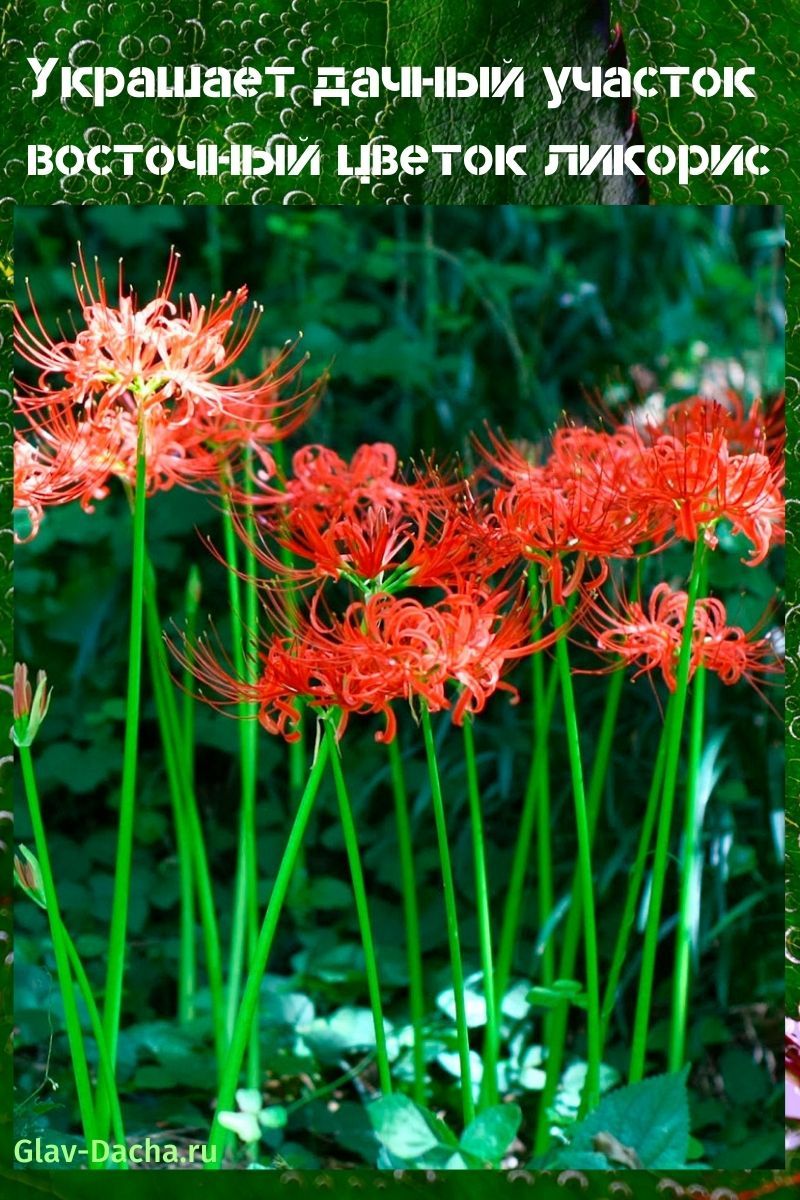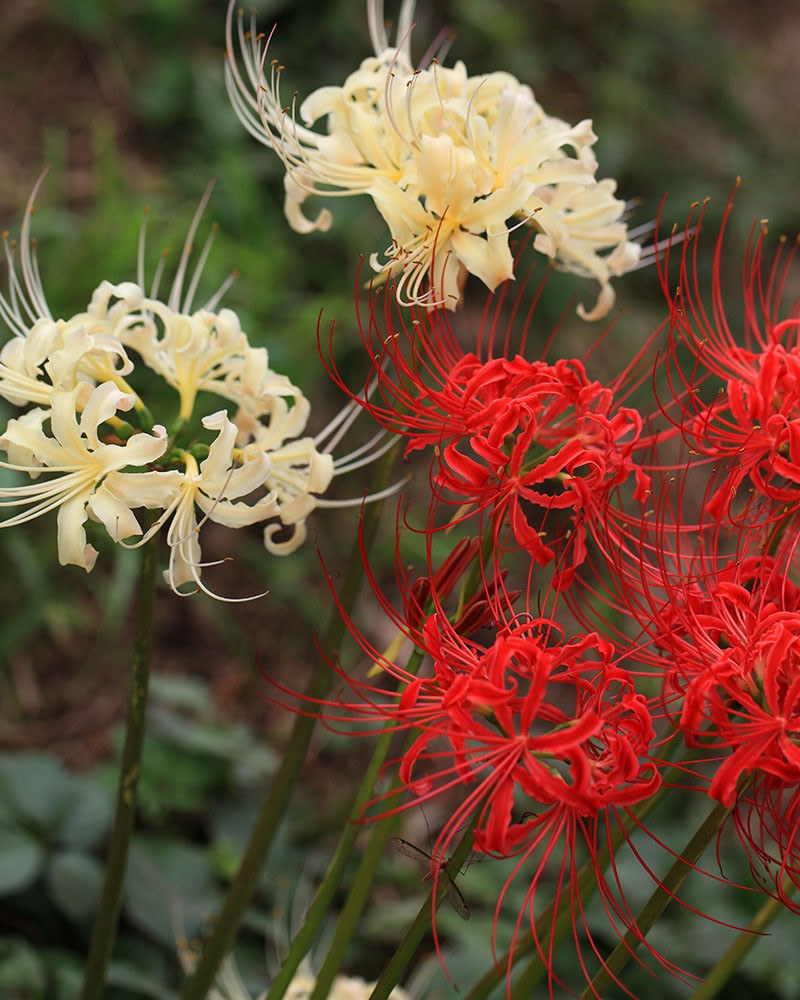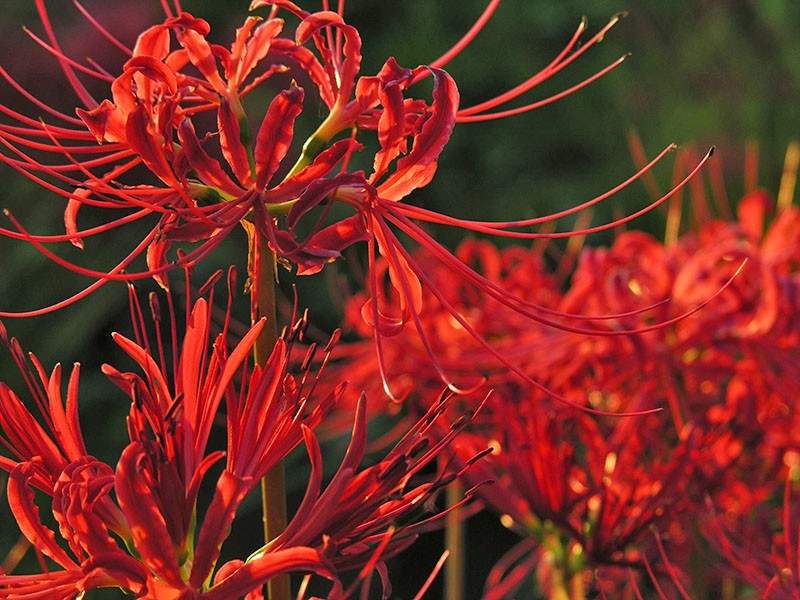The oriental flower of lycoris decorates the summer cottage
 Lycoris or "spider lilies" is an unusually beautiful perennial plant, shrouded in many legends and superstitions. In Asian countries, the lycoris flower is also called the "flower of death" and is traditionally endowed with magical properties. This plant has an exotic appearance and pleasant aroma, thanks to which it has found wide application in landscape design. Licorice does not require complex care, so even novice flower growers can be engaged in its cultivation.
Lycoris or "spider lilies" is an unusually beautiful perennial plant, shrouded in many legends and superstitions. In Asian countries, the lycoris flower is also called the "flower of death" and is traditionally endowed with magical properties. This plant has an exotic appearance and pleasant aroma, thanks to which it has found wide application in landscape design. Licorice does not require complex care, so even novice flower growers can be engaged in its cultivation.
Botanical description of lycoris


Botanical features of the lycoris flower:
- Licorice is a bulbous plant. Its bulbs are large enough, 5-6 cm in diameter.
- Leaves are belt-shaped, narrow, up to 40-50 cm long. Lycoris foliage has a rich and bright green color.
- In late June or early July, the leaves die off and in their place, stems up to 50-70 cm long are formed.
- When lycoris blooms depends on the conditions of its cultivation. Most often, large buds appear in September. On one stem, from 5 to 7 inflorescences are formed. The flowering process lasts 10 to 15 days.
- Lycoris buds have an unusual, original shape - outwardly they resemble lilies, but their stamens are outwardly similar to cobwebs, for which the plant was called "spider lilies".
- Licoris has various color options - depending on the variety, the flowers can be painted in golden yellow, orange, crimson red, lilac or silver-white.
One of the main features of the lycoris flower is that its flowers and leaves never "meet" each other.
The flowering of the plant lasts up to 15 days, after which the inflorescences begin to fade. Only after this does the formation of arrow-shaped leaves begin, which persist throughout the winter, until the end of May.
Lycoris flower - popular species

Under natural conditions, about 20 varieties of lycoris grow, but only 4 species of this perennial are grown in Russia:
- lycoris Radiata;

- scaly;

- blood red;

- golden.

Licoris radiant or Radiata is one of the most common and unpretentious plant varieties up to 40-70 cm high. Suitable for growing both in central Russia and in the southern regions. The leaf plates are large and curved at the edges. Inflorescences can be white, red, or lilac-pink. Flowering begins in the first half of September.
Licorice scaly - the most frost-resistant variety. This perennial can withstand frosts down to -32 ° C and does not require additional shelters. But he is very picky about the quality of the soil, which must be well moistened. During the flowering period, which begins in August, up to 7-10 lilac or light pink inflorescences with a golden center bloom on one stem.
Licorice golden - this plant up to 55-65 cm in height can be grown only in the southern regions of Russia, since it is characterized by minimal frost resistance. Flowering begins at the end of May or the first half of June, up to 5-7 golden-yellow buds bloom on each stem.
Blood red or fire lycoris - This perennial is best grown in southern regions, in areas with well-drained soil. This is a low-growing plant, the height of which does not exceed 40-45 cm.  The leaves are narrow, up to 2 cm wide, inflorescences of a rich scarlet color, which appear on the stems of lycoris in the second half of August.
The leaves are narrow, up to 2 cm wide, inflorescences of a rich scarlet color, which appear on the stems of lycoris in the second half of August.
Growing lycoris
 Planting and caring for golden lycoris, like its other varieties, is not difficult, so it can be grown both in the garden area and on the windowsill. This plant is distinguished by its unpretentiousness, good resistance to diseases and pests, as well as long and lush flowering.
Planting and caring for golden lycoris, like its other varieties, is not difficult, so it can be grown both in the garden area and on the windowsill. This plant is distinguished by its unpretentiousness, good resistance to diseases and pests, as well as long and lush flowering.
Licorice can be planted both in autumn and spring. Autumn planting is carried out in October, so that the plant has time to take root by the first frost. In the spring, you can start planting lycoris in April.
Site selection and soil preparation
 Licorice is a thermophilic plant that prefers uniform sunlight. It does not tolerate too shaded areas, as well as direct sunlight. It is best to choose semi-shaded places for lycoris or plant them in the shade of trees.
Licorice is a thermophilic plant that prefers uniform sunlight. It does not tolerate too shaded areas, as well as direct sunlight. It is best to choose semi-shaded places for lycoris or plant them in the shade of trees.
The best option for growing lycoris will be a well-drained, sandy, loose soil with minimal acidity. For a lush flowering plant, you can prepare a nutritious substrate from sod and leafy soil, as well as humustaken in equal parts.
Landing lycoris
 Planting lycoris is carried out in two ways - by seeds and bulbs. The first method is used extremely rarely, as it has several disadvantages. Lycoris seeds have a low germination rate - no more than 45-50%. Seedlings that germinate will bloom only after 6-7 years.
Planting lycoris is carried out in two ways - by seeds and bulbs. The first method is used extremely rarely, as it has several disadvantages. Lycoris seeds have a low germination rate - no more than 45-50%. Seedlings that germinate will bloom only after 6-7 years.
It is much more effective to plant perennials with bulbs, the germination rate of which is at least 85%.
Landing lycoris:
- for reproduction, you need to choose large bulbs, covered with brown scales;
- prepare planting holes at a distance of 20-30 cm, after weeding and loosening the area;
- the depth of the holes should be about 15 cm;
- pour a layer of sand at the bottom of each planting hole;
- lightly press the bulbs into the hole and sprinkle with sand, and on top with leafy earth;
- compact and water the young seedlings liberally.
Planting lycoris must be carried out with protective gloves, since all parts of this plant are considered poisonous and can lead to skin irritations.
What care does a lycoris flower need

Licoris is distinguished by its unpretentious care both when grown in a personal plot and on a windowsill.
Basic rules of care:
- A perennial plant needs watering only in the spring and summer. During the formation of leaves and inflorescences, the number of watering should be increased to 3-5 times a week, since the soil should not be allowed to dry out.

- During the rest period, after the end of flowering, the number of waterings is reduced to 1 time per week. In winter, lycoris does not need moisture.
- Fertilizers should be applied every 15 days throughout the growing season. From the moment the leaves are formed, nitrogen-containing fertilizing is used. After the buds appear, fertilizers high in potassium.
- In the fall, after the end of flowering, the plant is pruned. A fraction of this removes any dried, wilted leaves.
- Despite the fact that lycoris is a bulbous plant, it does not require annual replanting. It is quite enough to dig up the onion every 4-6 years and carefully separate the children from it with a sharp knife. After that, the incision should be sprinkled with ash or coal powder.
 Licoris is an unusual plant that can be a bright decoration for any garden plot or windowsill. If you follow the simple rules of care, every gardener will be able to grow an exotic plant with lush and colorful inflorescences.
Licoris is an unusual plant that can be a bright decoration for any garden plot or windowsill. If you follow the simple rules of care, every gardener will be able to grow an exotic plant with lush and colorful inflorescences.